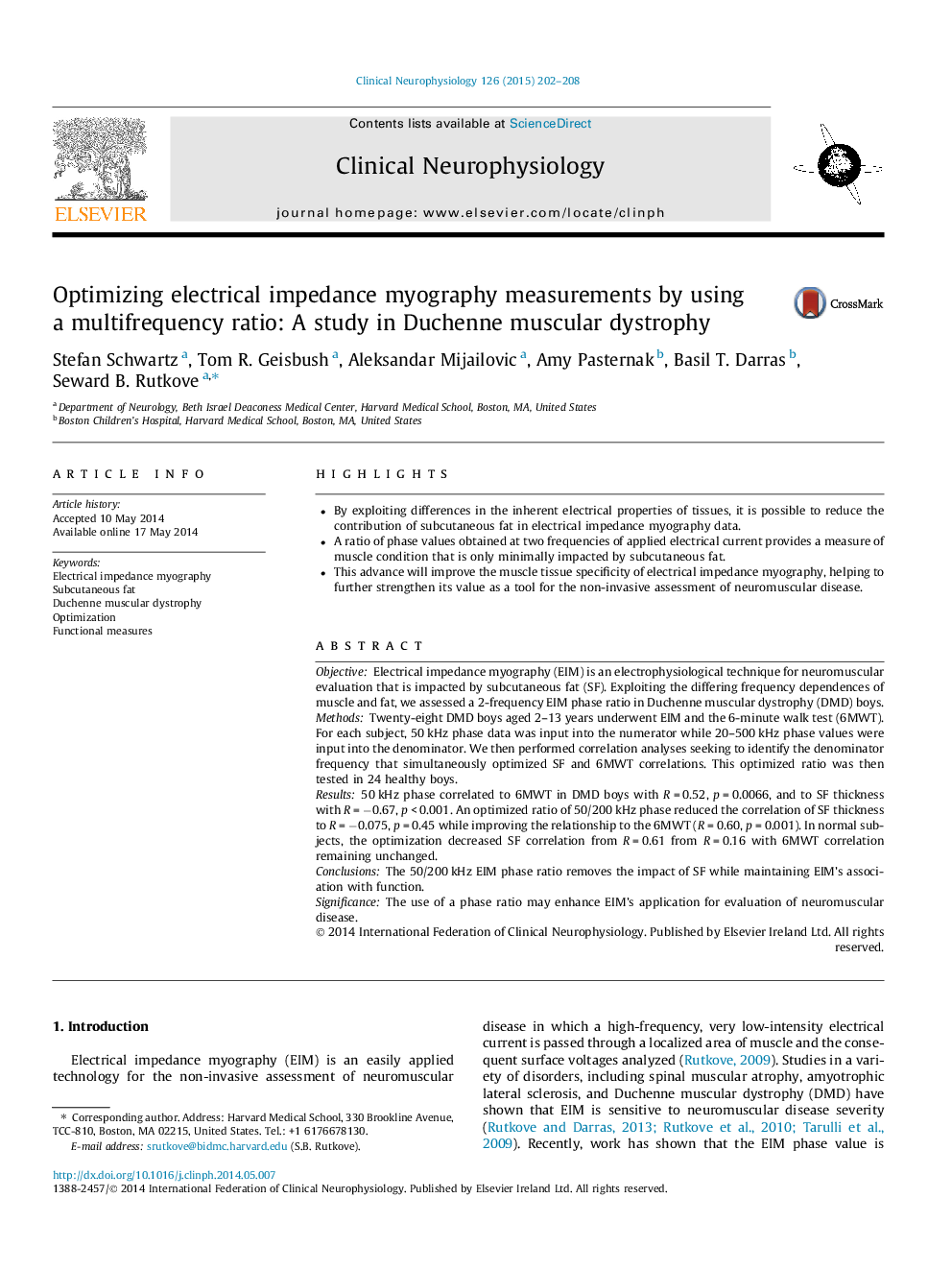| Article ID | Journal | Published Year | Pages | File Type |
|---|---|---|---|---|
| 3043228 | Clinical Neurophysiology | 2015 | 7 Pages |
•By exploiting differences in the inherent electrical properties of tissues, it is possible to reduce the contribution of subcutaneous fat in electrical impedance myography data.•A ratio of phase values obtained at two frequencies of applied electrical current provides a measure of muscle condition that is only minimally impacted by subcutaneous fat.•This advance will improve the muscle tissue specificity of electrical impedance myography, helping to further strengthen its value as a tool for the non-invasive assessment of neuromuscular disease.
ObjectiveElectrical impedance myography (EIM) is an electrophysiological technique for neuromuscular evaluation that is impacted by subcutaneous fat (SF). Exploiting the differing frequency dependences of muscle and fat, we assessed a 2-frequency EIM phase ratio in Duchenne muscular dystrophy (DMD) boys.MethodsTwenty-eight DMD boys aged 2–13 years underwent EIM and the 6-minute walk test (6MWT). For each subject, 50 kHz phase data was input into the numerator while 20–500 kHz phase values were input into the denominator. We then performed correlation analyses seeking to identify the denominator frequency that simultaneously optimized SF and 6MWT correlations. This optimized ratio was then tested in 24 healthy boys.Results50 kHz phase correlated to 6MWT in DMD boys with R = 0.52, p = 0.0066, and to SF thickness with R = −0.67, p < 0.001. An optimized ratio of 50/200 kHz phase reduced the correlation of SF thickness to R = −0.075, p = 0.45 while improving the relationship to the 6MWT (R = 0.60, p = 0.001). In normal subjects, the optimization decreased SF correlation from R = 0.61 from R = 0.16 with 6MWT correlation remaining unchanged.ConclusionsThe 50/200 kHz EIM phase ratio removes the impact of SF while maintaining EIM’s association with function.SignificanceThe use of a phase ratio may enhance EIM’s application for evaluation of neuromuscular disease.
